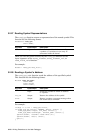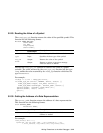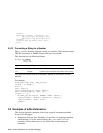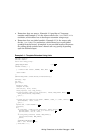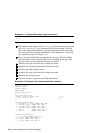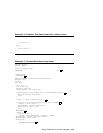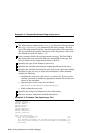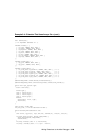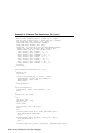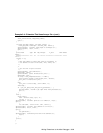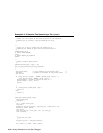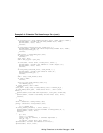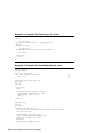
Example 3–3: Template Extensions Using Arrays (cont.)
}
}
1 The help string is output by the check_args function if the user enters
the help extension_name command at the kdbx prompt. The first
line of the help string should be a one-line description of the extension.
The rest should be a complete description of the arguments. Also, each
line should end with the string \\\n\.
2 Every structure field to be extracted needs an entry. The first field is
the name of the next extracted field; the second field is the type. The
last two fields are for output and initialize to NULL.
3 Specifies the type of the element in the array.
4 Specifies the variable containing the beginning address of the array.
5 Specifies the variable containing the size of the array. Note that reading
variables is only one way to access this information. Other methods
include the following:
• Defining the array size with a #define macro call. If you use this
method, you need to include the appropriate header file and use the
macro in the extension.
• Querying dbx for the array size as follows:
dbx("print sizeof(array//sizeof(array[0]")
• Hard coding the array size.
6 Specifies the string to be displayed as the table header.
7 Extracts, formats, and prints the field information.
Example 3–4: Extension That Uses Arrays: file.c
#include <stdio.h>
#include <sys/fcntl.h>
#include <kdbx.h>
#include <nlist.h>
#define SHOW_UTT
#include <sys/user.h>
#define KERNEL_FILE
#include <sys/file.h>
#include <sys/proc.h>
static char *help_string =
"file - print out the file table \\\n\
Usage : file [addresses...] \\\n\
If no arguments are present, all file entries with non-zero reference \\\n\
counts are printed. Otherwise, the file entries named by the addresses\\\n\
are printed. \\\n\
";
3–28 Writing Extensions to the kdbx Debugger



